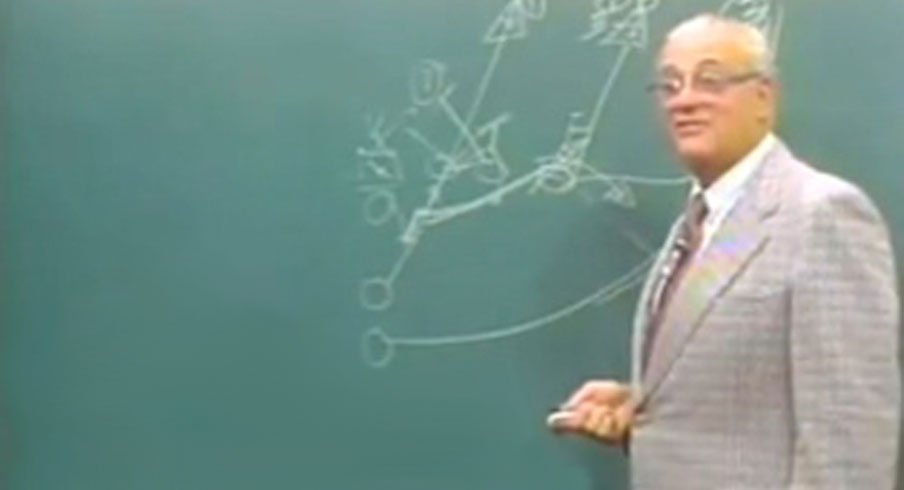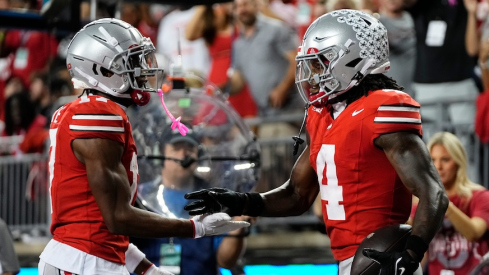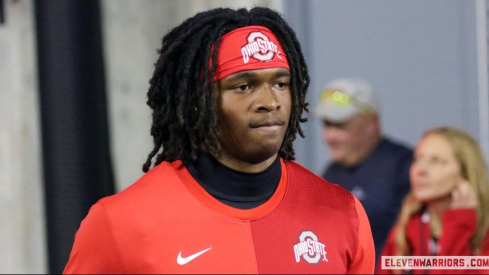Ohio State lands its second commitment of the day from in-state tight end Nick Lautar.
I spent the last two weeks looking at the philosophy that animates Urban Meyer and Tom Herman's offense. Now I will turn to the run plays that Meyer uses to implement that philosophy.
As noted, the inside zone/gap scheme run game is the core of the Ohio State offense. If an opposing team plays the Buckeyes with their base defense, OSU will run the football until a defense overcompensates. The rest of the offense then works to prevent a defense from overcompensating and/or takes advantage when a defense does so.
The following is not an exhaustive list. Rather, it represents Ohio State's primary run plays off which everything else is predicated.
Tight/Inside Zone Read
If there is one play that undergirds an Urban Meyer offense, this is it. It is a play that OSU may run in some games as often as every other play combined.
Meyer's inside zone is a quicker hitting and more aggressive play design than a typical inside zone play. In some ways it resembles a dive play. The offensive line will take an aggressive half step to the play side. If a lineman is covered (has a defensive lineman over him), he is responsible for blocking him. If uncovered, the lineman combo blocks to the play side with the nearest covered teammate. The uncovered linemen will work to the defensive linemen's playside shoulder.
The,n one of the two linemen combo blocking will come off onto the linebacker in their area. All the while the offensive linemen must work in tandem and keep their eyes upfield. If the defensive lineman over the covered lineman stunts toward his uncovered counterpart, the covered lineman will pass him off to the uncovered lineman and go upfield to block the linebacker. If the linebacker immediately blitzes, the uncovered lineman will block him and each lineman is responsible for his individual blocks.
The halfback aligns offset a half-yard behind the quarterback. He aims for the backside leg of the center when the play is toward the tight end:
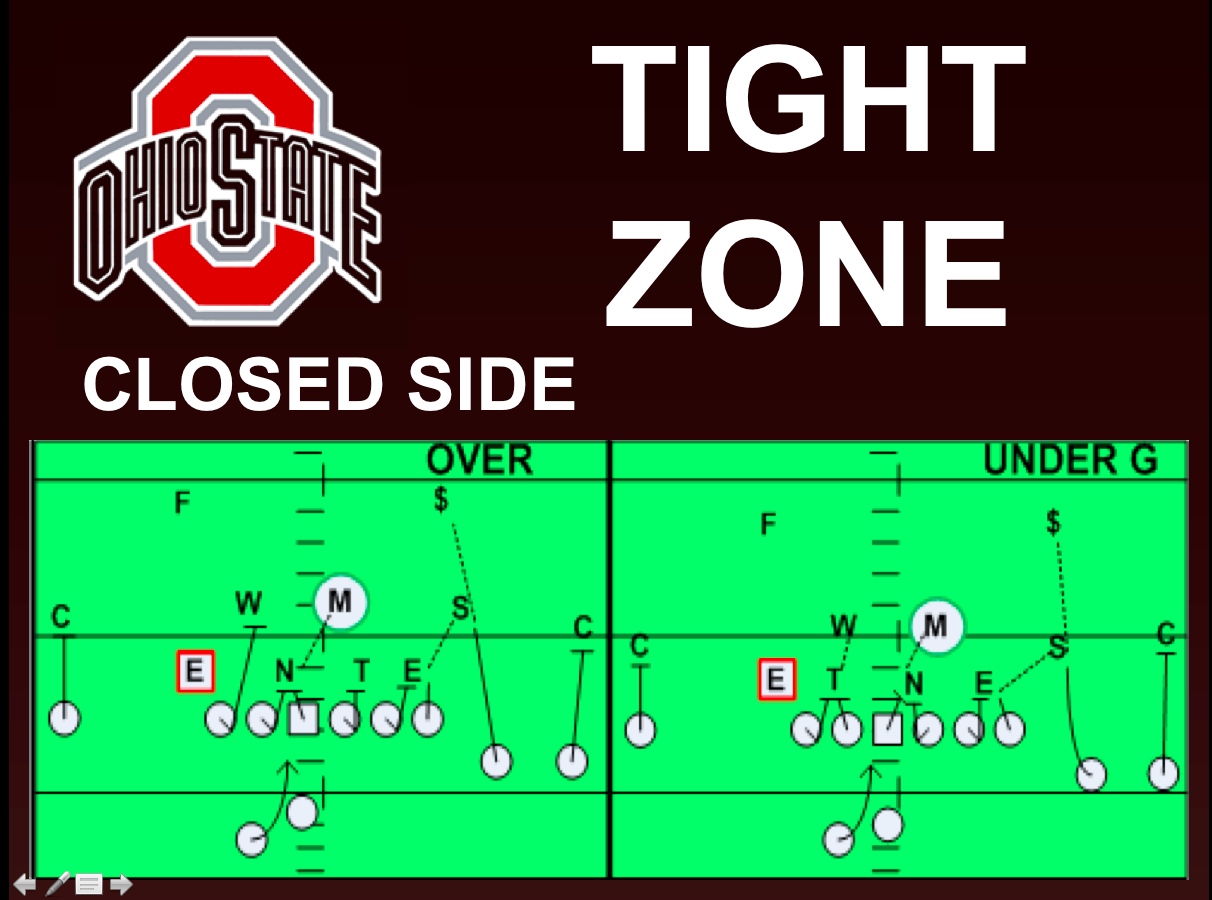
And the front side leg to the open side:
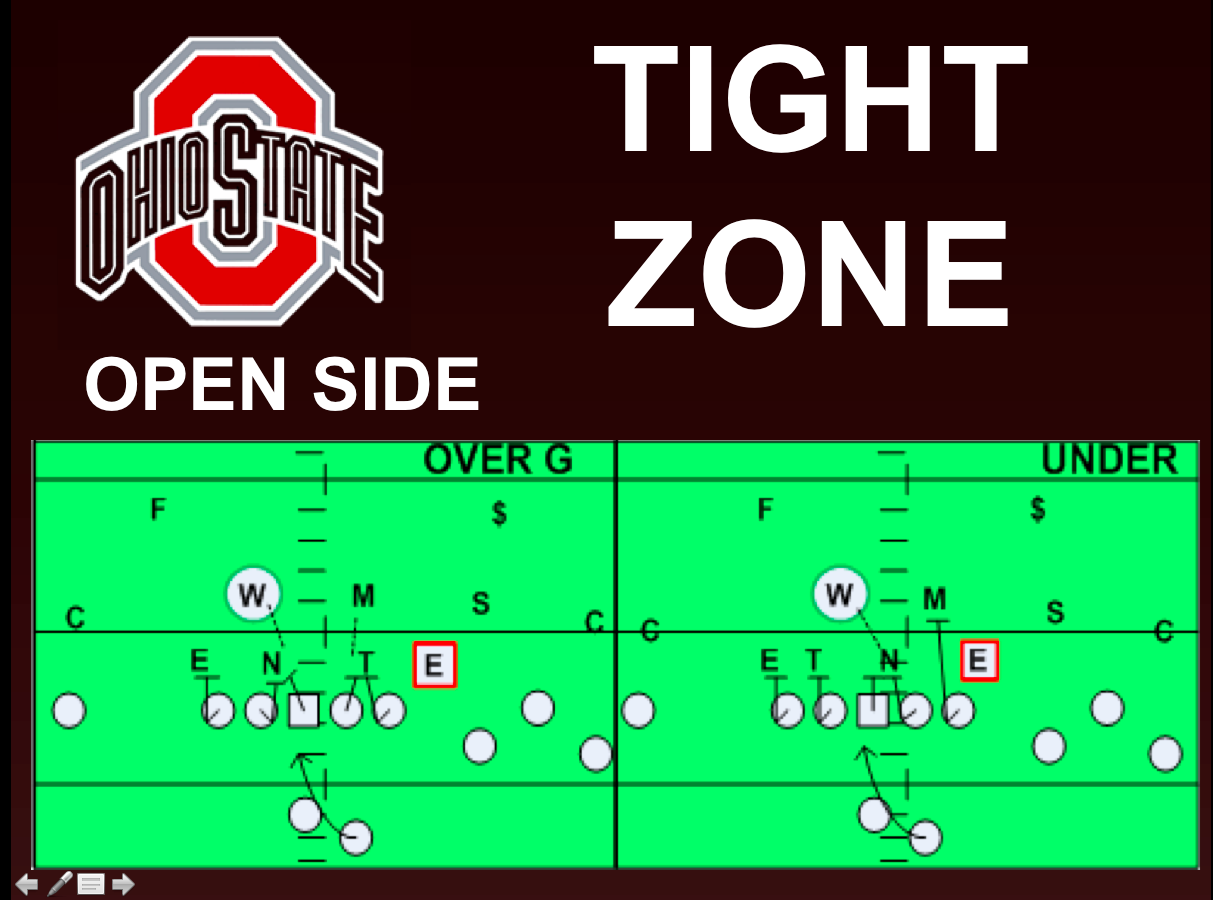
In both cases, Ohio State wants the play to hit the A-gap bubble inside the 3-technique and cut back from there against overpursuit. This again underscores the north-south nature of the play.
The quarterback reads the backside defensive end. He thus accounts for the unblocked end. If the end's shoulders stay square, the QB gives. If he comes down the line, he keeps.
The Buckeyes also runs variations off the play. They can have the backside H-back fold block on the alley player.
The QB can also run a midline read of an interior defensive lineman.
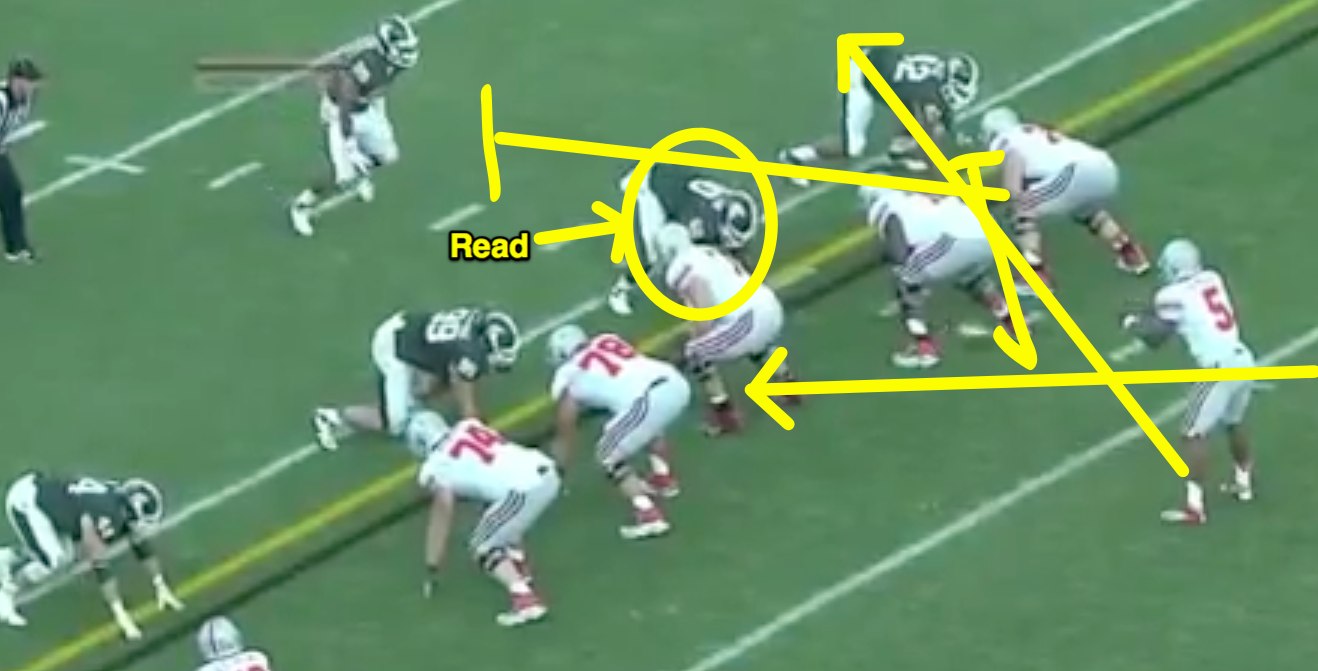
Counter trey
Counter trey is the first of the block down, kick out and fold gap blocking schemes that OSU employs. This is the same blocking scheme that is ubiquitous in pro-style offenses. Meyer's counter trey can be run by the halfback with a QB read, but the primary method is QB counter trey, featuring Braxton Miller.
The Buckeyes run the counter trey in one of two methods. The first is off a jet sweep fake to the halfback.
The Buckeyes will alternatively run it as a single wing play, with the halfback as the lead blocker.
In either case, the blocking scheme is the same. This reduces practice time for the offense while still managing to give defenses different looks.
The playside offensive line down blocks to the inside gap. They will again combo block through the defensive linemen to the backside linebackers. The backside guard pulls and kicks out the defensive end. The backside back — whether an H-back or halfback — then leads through the hole on the playside linebacker.
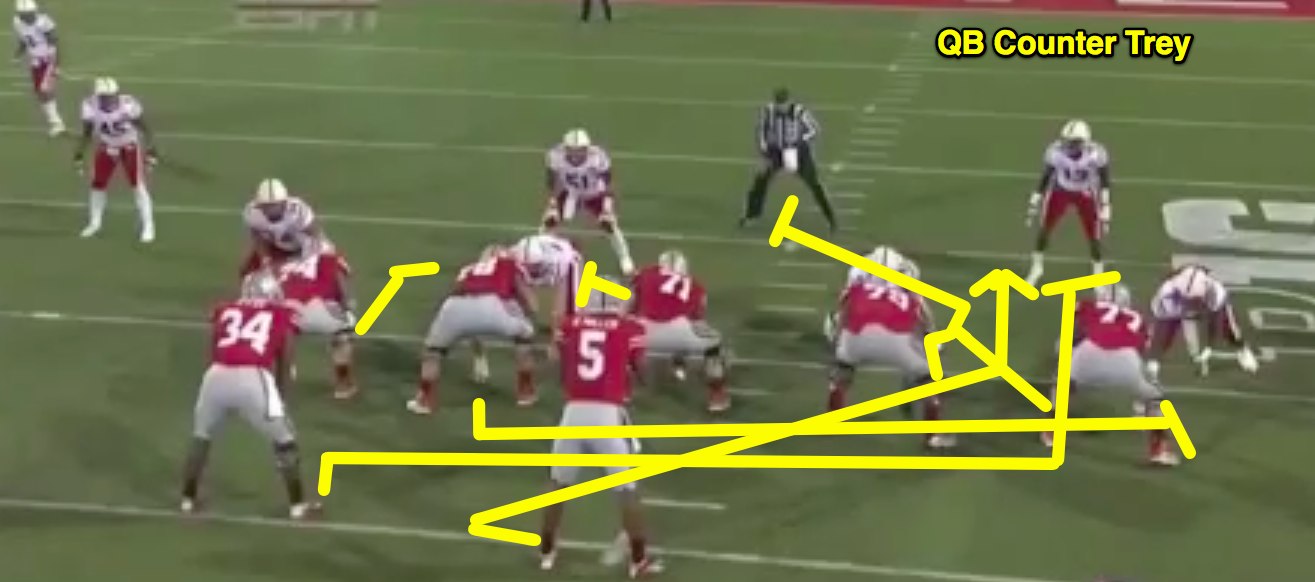
Power/Dave
Power may have defined Jim Tressel's offense, but it is also a staple for Urban Meyer.
Power uses largely the same blocking scheme as the counter trey. The playside offensive line again blocks down, with the backside guard pulling and back leading. The only difference is the guard and back exchange assignments. The H-back kicks out the end while the pulling guard pulls into the hole.
OSU can also run one-back power to the tight end. In that situation, the tight end base blocks the outside linebacker while the guard still folds into the hole.
Meyer runs the play to the side of the halfback's alignment. The halfback will take a false step and then aim for the playside C-gap right behind the pulling guard. This complements inside zone in that if a defense begins slanting away from the halfback it plays right into the power blocking scheme. It also makes Dave a quick-hitting play. The Buckeyes will generally feature it in short yardage and run-first situations.
Inverted Veer/ power read
Inverted veer, or the power read, is the Buckeyes' other primary read play. As the name "power read" implies, the play employs the same blocking scheme as power. The line blocks down with the backside guard pulling and leading through the hole. The only difference is rather than kicking out the end man on the line of scrimmage, the offense accounts for him through the QB read.
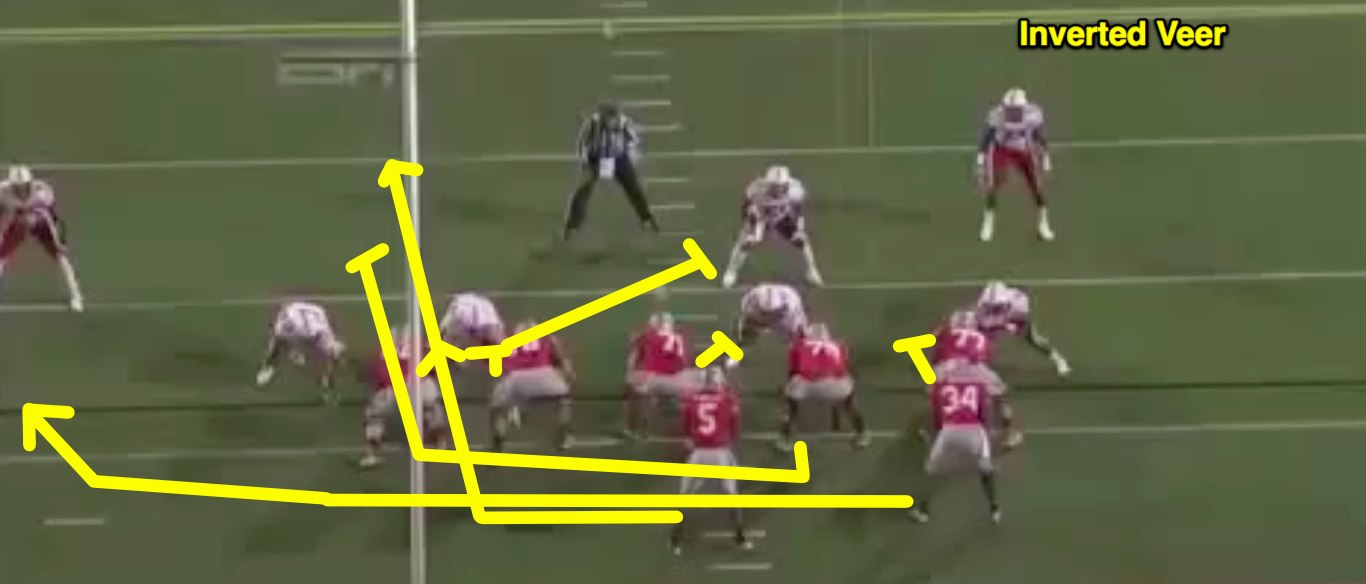
"Inverted veer" refers to the back action. On a traditional veer option play, the halfback dives at the front side C-gap. The QB either gives or pulls and attacks outside. Here, however, the halfback takes a sweep path. If the QB keeps, he aims for the C-gap, following the pulling guard into the hole.
In contrast to zone read, where the default is to give, here the play works best when the quarterback keeps. The goal is to stretch the linebackers horizontally, allowing the quarterback to cut inside them. However, if the defense squeezes down, the quarterback must be prepared to give.
The Buckeye offense gets a two-fer. Inverted veer gives a different look to the defense, but the blocking is the same for the offensive line, cutting down learning and increasing repetitions. It also forces a defense to be honest pre-snap vis-à-vis Ohio State's halfback alignment. It is run from the same pre-snap look as inside zone. But it attacks the front — rather than backside — defensive end, increasing defensive end hesitancy.
These four plays constitute the core of the Ohio State run offense. This underscores that Meyer's base offense is the same inside zone and power plays as pro-style offenses run, with the employment of the QB run threat to give the offense better arithmetic. Next week I will examine the run game accouterments. Those plays both build off the base schemes and work to prevent the defense from overplaying the above plays.
